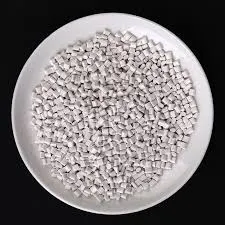The Role of Chemical Treatments in Water Purification
Water is a fundamental resource for life, and its quality is essential for human health, agriculture, and various industries. With the growing concerns over pollution and the scarcity of clean water, ensuring the proper treatment of water has become more critical than ever. Numerous methods exist for water purification, and one of the most effective approaches involves the use of chemicals. These chemical treatments play a vital role in removing contaminants, disinfecting water, and ensuring safe drinking water.
The Importance of Water Treatment
Water, in its natural state, often contains various impurities, including suspended solids, bacteria, viruses, and chemical pollutants. These contaminants can pose serious health risks and can adversely affect the environment if left untreated. Water treatment aims to eliminate these hazards, making it safe for consumption and other uses. Chemical treatment methods are widely employed due to their efficiency and effectiveness in addressing diverse water quality issues.
Common Chemicals Used in Water Treatment
Several chemicals are commonly used in the water treatment process, each serving specific purposes.
1. Chlorine This is one of the most widely used disinfectants in water purification. Chlorine effectively kills bacteria, viruses, and other microorganisms, making it an essential component of municipal water treatment. However, care must be taken to control the amount added, as excessive chlorine can lead to harmful byproducts.
2. Alum (Aluminum Sulfate) Alum is utilized as a coagulant, helping to remove suspended particles from water. When added to water, it forms flocs by binding with impurities, which can then be easily removed through sedimentation. This process enhances water clarity and reduces the burden on filtration systems.
3. Bleaching Powder Another chemical used for disinfection, bleaching powder, is effective against a broad spectrum of pathogens. It releases chlorine when dissolved in water and is particularly useful in treating large quantities of water in public systems.
chemical used for treatment of water

4. Polymeric Flocculants These are synthetic coagulants that enhance the removal of suspended solids and organic matter in water. They are often more effective than traditional coagulants and can be adjusted to optimize performance based on specific water chemistry.
5. Ozone Ozone is a powerful oxidizing agent that effectively destroys bacteria and viruses without producing harmful byproducts like chlorine can. It is increasingly used in advanced water treatment processes, especially in bottled water production and wastewater treatment.
6. Hydrochloric Acid This chemical is sometimes used to adjust the pH of water. Maintaining the proper pH is crucial for maximizing the effectiveness of other treatment chemicals.
Environmental and Health Considerations
While chemical treatments are essential for ensuring safe drinking water, they also raise environmental and health concerns. The use of chemicals can sometimes lead to harmful byproducts, especially when reacting with organic material in the water. For instance, chlorination can produce trihalomethanes (THMs), which have been linked to cancer. As a result, regulatory agencies closely monitor water treatment practices to minimize such risks.
Moreover, the overuse of certain chemicals can lead to the contamination of local water sources. For instance, excessive application of alums and other coagulants can lead to the accumulation of aluminum in the environment, potentially harming aquatic ecosystems. Sustainable practices and alternative methods are being explored to reduce reliance on traditional chemicals.
Conclusion
The treatment of water using chemicals is a cornerstone of modern public health. By effectively removing contaminants and ensuring the safety of drinking water, these chemical treatments play a vital role in the well-being of communities around the globe. However, as environmental concerns continue to grow, it is crucial to adopt best practices in water purification. This includes monitoring chemical use, minimizing harmful byproducts, and exploring innovative technologies that provide cleaner and more sustainable water treatment solutions. As the quest for clean water continues, the balance between effective treatment and environmental stewardship remains a pressing challenge for future generations.

